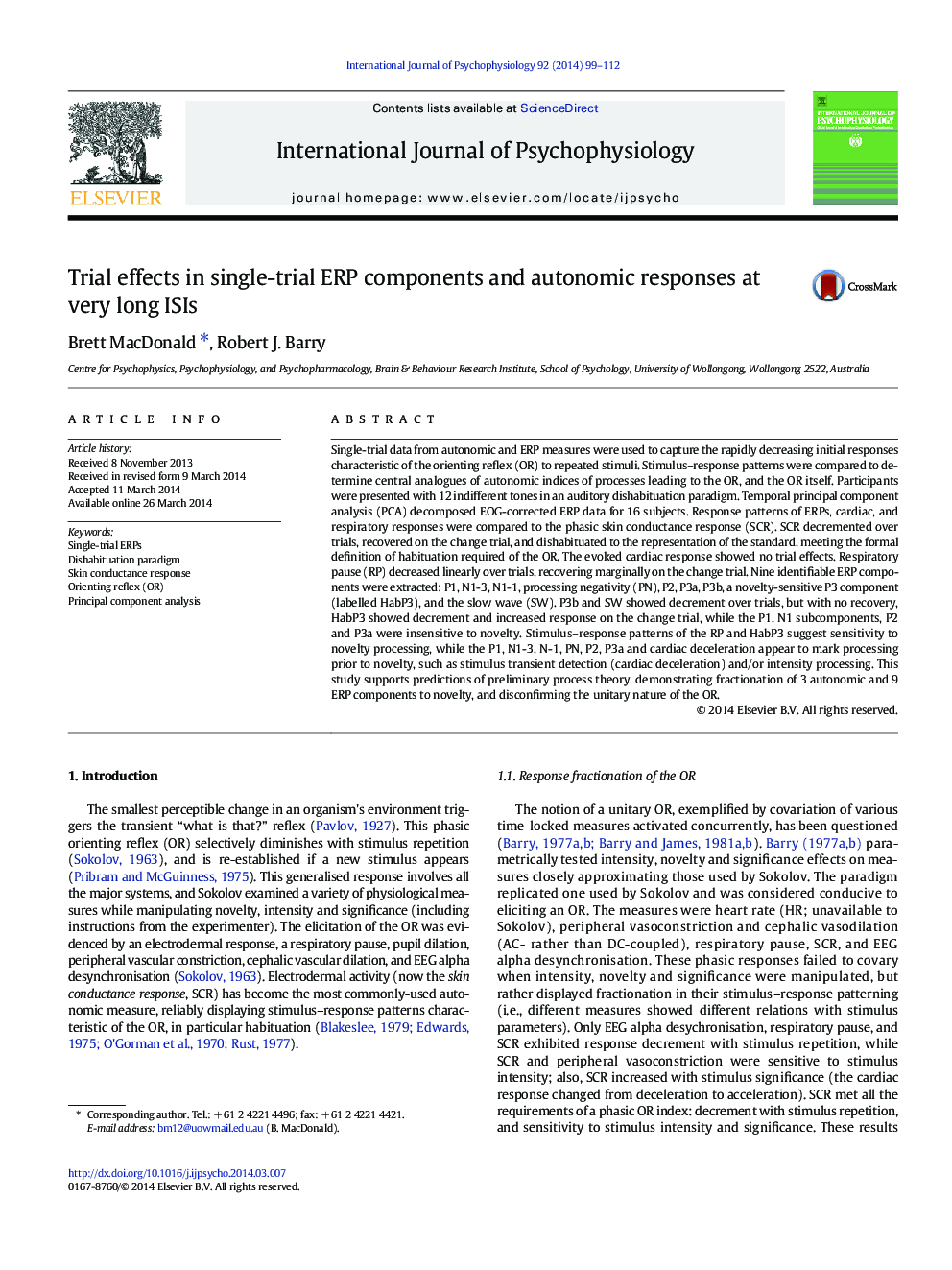| کد مقاله | کد نشریه | سال انتشار | مقاله انگلیسی | نسخه تمام متن |
|---|---|---|---|---|
| 929797 | 1474418 | 2014 | 14 صفحه PDF | دانلود رایگان |

• Fractionation was evident in cardiac, respiratory, and electrodermal responses.
• PCA-derived components from single-trial ERPs also displayed response fractionation.
• S–R pattern of HabP3 (PCA-derived component) paralleled the S–R pattern of SCR.
Single-trial data from autonomic and ERP measures were used to capture the rapidly decreasing initial responses characteristic of the orienting reflex (OR) to repeated stimuli. Stimulus–response patterns were compared to determine central analogues of autonomic indices of processes leading to the OR, and the OR itself. Participants were presented with 12 indifferent tones in an auditory dishabituation paradigm. Temporal principal component analysis (PCA) decomposed EOG-corrected ERP data for 16 subjects. Response patterns of ERPs, cardiac, and respiratory responses were compared to the phasic skin conductance response (SCR). SCR decremented over trials, recovered on the change trial, and dishabituated to the representation of the standard, meeting the formal definition of habituation required of the OR. The evoked cardiac response showed no trial effects. Respiratory pause (RP) decreased linearly over trials, recovering marginally on the change trial. Nine identifiable ERP components were extracted: P1, N1-3, N1-1, processing negativity (PN), P2, P3a, P3b, a novelty-sensitive P3 component (labelled HabP3), and the slow wave (SW). P3b and SW showed decrement over trials, but with no recovery, HabP3 showed decrement and increased response on the change trial, while the P1, N1 subcomponents, P2 and P3a were insensitive to novelty. Stimulus–response patterns of the RP and HabP3 suggest sensitivity to novelty processing, while the P1, N1-3, N-1, PN, P2, P3a and cardiac deceleration appear to mark processing prior to novelty, such as stimulus transient detection (cardiac deceleration) and/or intensity processing. This study supports predictions of preliminary process theory, demonstrating fractionation of 3 autonomic and 9 ERP components to novelty, and disconfirming the unitary nature of the OR.
Journal: International Journal of Psychophysiology - Volume 92, Issue 3, June 2014, Pages 99–112